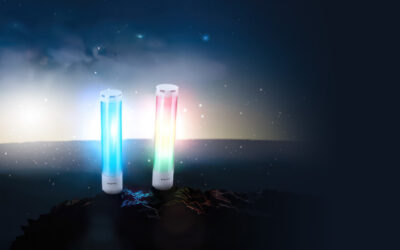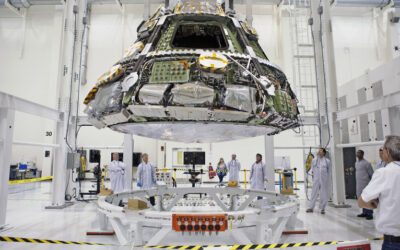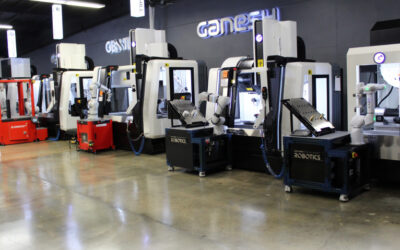The holiday season is all tradition – from preparing turkey to Bing Crosby’s White Christmas to holiday lighting. But as a turkey feast may become a vegetarian spread, and Bing Crosby gives way to Michael Bublé, holiday lighting has changed with the way our very world is changing.
Back in the day, when more of us had time on our hands and when electricity rates were far lower, stringing up masses of Christmas lights on our porches, lawns, trees, and houses was a friendly contest between neighbors. Bright lights! Excitement! Competition! Hollywood loved it and took it to the extreme with movies like National Lampoon’s Christmas Vacation. In the modern-day holiday classic, a scene that’s become famous happens when well-intentioned Clark W. Griswold (played by Chevy Chase) decorates the family home with 25,000 twinkle lights. Slow to get going, the lights come on with a blast that’s visible miles away – knocking out power across the city.
Back in Griswold’s day some 30 years ago, Christmas lights were incandescent. The technology had barely changed since the first practical light bulbs were patented by inventor Thomas Edison in 1879, with Edison modifying English chemist Joseph Swan’s vacuum-tube design and filament.
Essentially an electric current heating a wire filament to produce visible light, incandescent technology for Christmas lights was housed within translucent glass bulbs painted green, red, blue, and other colors.
Light at a price
While incandescent technology held advantages over its dangerous predecessors – small wax candles pinned to indoor Christmas tree branches, going back to the 17th century – incandescent bulbs were far from perfect for the task. Requiring tremendous energy to illuminate the bulb, they were not only wasteful but hot enough to burn a toddler’s fingers. And with millions of burned-out bulbs going into landfill, incandescents didn’t herald any joyous season for the environment.
Even the glass presented hazards. Although extremely thin for perfect translucence, the disparity between the heat inside the bulb and a wintry temperature outside could cause enough internal stress in the glass for the bulbs to explode, spraying splinters of glass and leaving behind an exposed electrified socket.
For outdoor lights in particular, another big issue was the wiring itself. Earlier versions of ‘string lights’ posed a problem: since they were series-wired, if one bulb didn’t work, none of the others did. Thankfully, this did change with parallel wiring.
The advent of LED
Over time, interior and exterior incandescent lights became smaller, thanks to manufacturers such as NOMA, an industry leader. Although smaller than regular Christmas lights, they were still incandescent, with many of the same issues as their large counterparts. Remaining the only viable option for decades, incandescent finally started losing ground when LED (light emitting diodes) was introduced to the marketplace.
The most energy-efficient form of lighting on the market today, LED has gained widespread popularity in offices, factories, and in the home for many reasons. Utilizing multiple diodes and a semiconductor, electricity is converted to light without heat, a huge advantage over its incandescent predecessors.
Like many inventions, LED lighting was the culmination of many pioneers’ work, starting with the discoveries of English engineer – and assistant to radio-innovator Guglielmo Marconi – Henry Joseph Round, in 1907. Although there were improvements over the decades, it wasn’t until 1961 that a telling advance was made, when electrical engineers Robert Biard and Gary Pittman accidentally invented an infra-red LED while working on developing GaAs varactor diodes.
Just a year later, in 1962, Nick Holonyak, Jr. earned the title ‘Father of the Light-Emitting Diode’ on inventing the first LED producing visible red light. Further development ensued, with LEDs becoming brighter and eventually able to produce white light with minimal loss to heat.
Bigger and brighter
Just as holiday lighting in the home has changed, so has city and display lighting. Cities and towns no longer just decorate lamp poles, but mount massive displays nothing short of Las Vegas-style spectacular.
One of the most famous remains New York City’s Rockefeller Center Tree Lighting, at 30 Rockefeller Plaza. On December 4, the city kicks off its annual Tree Lighting Ceremony for the 87th time, traditionally hugely popular with both locals and tourists. The display – which will remain illuminated for a full 24 hours each day through early next year – continues a tradition going back to the Great Depression. Through this season, millions will come to admire the massive glittering tree (usually a Norway Spruce) in midtown Manhattan.
Up against the holiday displays in many other cities that emulate it, the Rockefeller Center Christmas Tree outdoes itself year after year. Not only is the selection of the tree itself important, but expertise in moving the tree, usually 125 feet (38 meters) tall, is crucial, requiring a special telescoping trailer.
The shape of the tree must not only be pleasing to the eye, but have branches strong enough to bear the weight of heavy ornaments. Once the tree is moved into place, it is supported by four guy-wires and a steel spike at the base, with scaffolding erected so it can be decorated – and decorated it is. Topped with an enormous Swarovski crystal star with a brightness of 106,000 lumens, the display includes a vast number of LED lights adorning the tree – a number ever increasing. Introduced in 2007, when the technology started taking off, LED has been used ever since. Initially some 30,000 LEDs were used, and this has grown to about 50,000 today. The LEDs, together with the star – made up of three million crystals and 70 glass spikes – turn night into day.
A marvel for millions
Not to be outdone, the National Christmas Tree, sited near the White House in Washington, D.C., is another marvel using modern lighting technology. A tradition since 1923, the tree was first set up by The Society for Electrical Develop to encourage Americans to use more electricity, at a time when only half of U.S. homes had it.
As times change and energy becomes both costlier and more carefully consumed, lighting sources for the tree have also adapted. In the mid-1990s, a study by the National Renewable Energy Laboratory suggested that solar energy could be used to help keep the tree lit during daylight hours. And like the Rockefeller Christmas tree, its Washington counterpart saw LEDs incorporated into the lighting scheme in the early 2000s, joining thousands of incandescent bulbs, large illuminated snowflake ornaments, and even holographic materials. Finally in 2007, incandescent bulbs were fully replaced with LEDs, which were, at the time, 60 percent more energy-efficient than their incandescent competition.
In the case of West Virginia’s spectacular Winter Festival of Lights and the Twelve Days of Christmas, a massive light tunnel, Peanuts cartoon characters, and more. Covering 300 acres, the display is so large most visitors drive or take a trolley ride through it. Specialized computer software makes lights ‘dance’ to music or produce changes in color, along with special power supplies, circuit controllers, and sequencers.
Thanks to LED technology and programming, we have come a long way from the days of scorching hot incandescent bulbs and even more dangerous candles on our Christmas trees. And while LED will doubtless be replaced in the future by even more energy-efficient light sources, the spirit of the holidays will doubtless remain the same.













